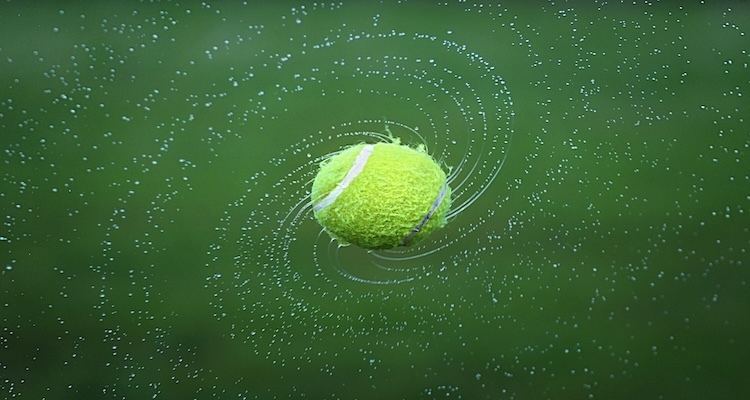
This article has all you have ever wanted to know about tennis balls. Well most of it anyway! We cover how much a tennis ball weighs, to how it is affected in the wet, through to the history of the development of the tennis ball.
A standard tennis ball weighs between 56.0 grams (1.98 ounces) and 59.4 grams (2.10 ounces). This weight range is specified by the International Tennis Federation (ITF) and applies to balls used in professional and recreational play.
A tennis ball does weigh more when it is wet. When a tennis ball absorbs water, the additional water increases its overall weight. The felt covering on the tennis ball is designed to be slightly absorbent, so it can take on water when exposed to wet conditions, such as playing in the rain or on a wet court. This increased weight can affect the ball's bounce and playability.
No, the weight of a tennis ball has not always been consistent throughout the history of the sport. The specifications for tennis balls have evolved over time, influenced by changes in materials, manufacturing techniques, and the standardization efforts by governing bodies like the International Tennis Federation (ITF).
In the early days of tennis, balls were made from various materials, including leather stuffed with rags or horsehair, which led to inconsistencies in weight and performance. As the sport developed, manufacturers began using rubber and other materials, leading to more standardized balls.
The ITF has played a significant role in setting and maintaining the standards for tennis balls, including weight, size, and bounce characteristics. These regulations have helped ensure consistency and fairness in the game. The current standard weight range (56.0 grams to 59.4 grams) has been in place for many years, contributing to the consistency seen in modern tennis balls.
The first tennis balls were made in the late 19th century, around the time when modern tennis, also known as lawn tennis, was developed. Major Walter Clopton Wingfield is credited with popularizing the game in 1873, and the early balls used in this version of tennis were made of rubber.
Initially, tennis balls were constructed with a rubber core, sometimes covered with flannel. Before this period, during the medieval and Renaissance eras, tennis balls used in the precursor game of real tennis (also known as court tennis or royal tennis) were made from various materials like leather stuffed with hair, wool, or other materials.
The development of the rubber vulcanization process by Charles Goodyear in the mid-19th century allowed for more durable and bouncier tennis balls, contributing to the standardization of tennis equipment as the sport grew in popularity. By the late 19th century, the tennis ball began to take on a form more recognizable to today's players.
We hope you found those facts interesting. Remember if you want a sports professional to help you with your tennis performance, or indeed any other sport, then do visit our homepage to search our global directory of sports professionals.
